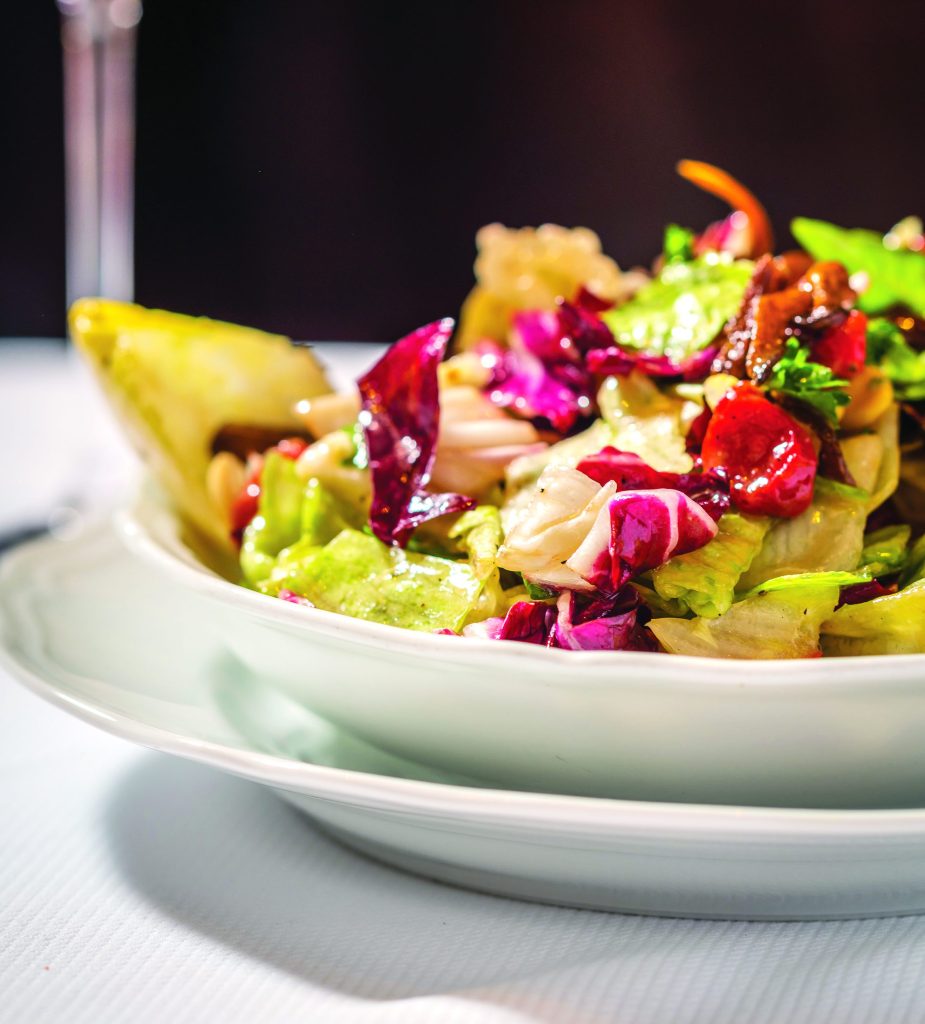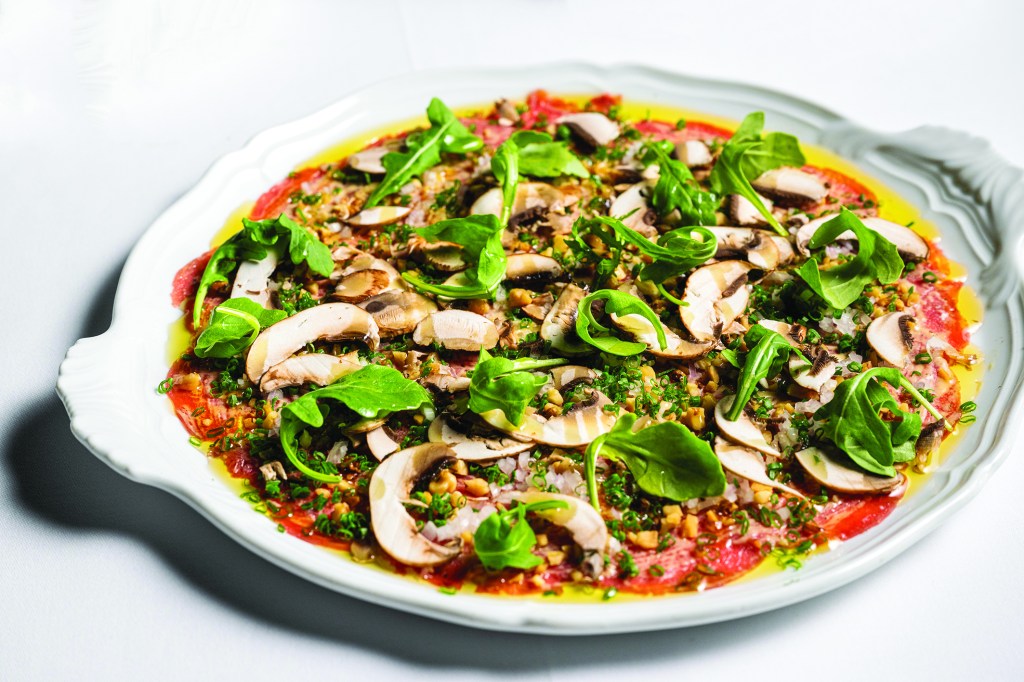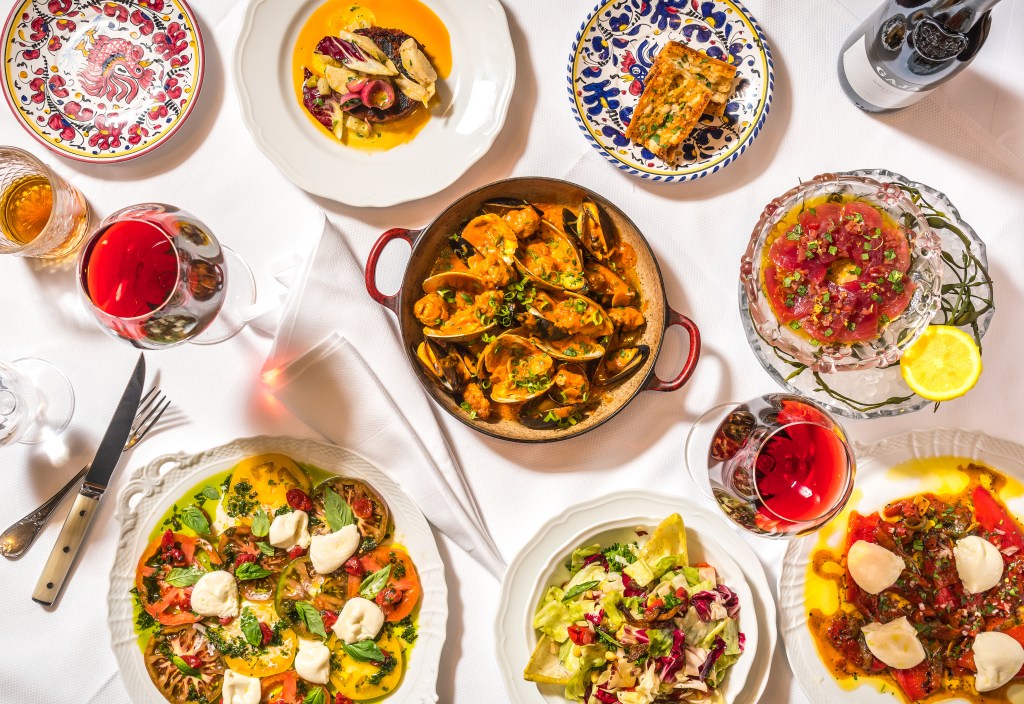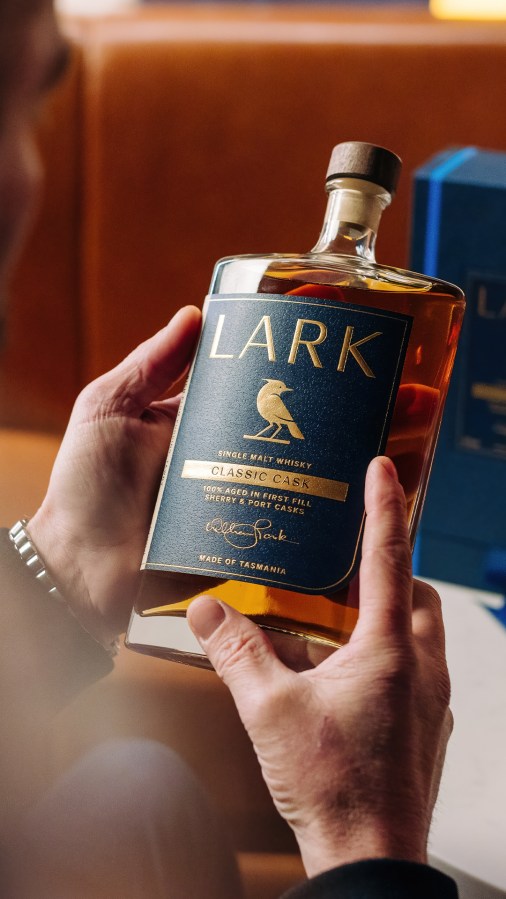It is one of the hardest reservations to secure in the city that never sleeps. Carbone in Greenwich Village is a celebrity favourite – and is still thriving 10 years after opening its Italian-American doors. Shivaune Field takes a seat at the Major Food Group’s renowned restaurant to find out why.
This story featured in Issue 9 of Forbes Australia. Tap here to secure your copy.

Frank Sinatra croons in Italian about flying and the blues, as a bow-tied waiter brings a cornucopia of colour to the white linen-topped table.
I am sitting in Carbone’s dimly lit, enclosed patio on Thompson Street, eating alone. It is a crisp autumn evening, but the patio heaters, red velvet interior, and flickering candles have taken the frost out of the 6pm air. A glass of Willamette Valley, Oregon pinot noir is not going astray in helping me warm up from the inside either.
Having ordered an appetizer, a salad, and a main course pasta, I am surprised when the maroon-suited waiter arrives with an overflowing plate of complimentary antipasto. Two huge chunks of parmigiano cheese — made specifically for Carbone in America’s cheese capital Wisconsin — dominate the plate. Three types of bread accompany it, one of which is slathered in garlic and more cheese. The waiter tells me the garlic bread is placed in the oven as soon as a guest is seated, to ensure it arrives at the table piping hot and fresh. Cauliflower sits in a bowl of vinaigrette dressing, next to shaved salami that has been shaped into curls.
I try a little of each of the delicacies and am impressed at the variety and generosity of the complimentary plate. My gaze turns to the delectable-looking chopped salad that has just arrived. Dressed with a peppery vinaigrette, it is a visual explosion of reds, maroons, limes, greens, and whites. Salty roasted mushrooms adorn the top, obscuring the layers of sundried tomatoes, Italian chickpeas, raddichio, mozzarella, and sliced pepperoncini beneath. The layers of flavour are unlike anything I have tasted before. Exquisite is the only way to describe it.

I’m almost done with the chopped salad when the beef carpaccio joins me, the salad, and the antipasto at the table. Good thing I’m dining solo and there is plenty of room for all of my plates I laugh to myself.
I turn my focus to the newly arrived carpaccio, plated in a manner that looks almost too good to disturb. The beef is shaved delicately and precisely. One of the three waiters facilitating the meal confides in me that the dressing drizzled over the top consists of walnuts, shallots, chives, and a combination of truffle and olive oils. The dressing has a big personality but is not so overpowering that the carpaccio is lost. Mushroom slivers dress the top of the dish, along with a sprinkle of arugula. It is exceptional, and by now, I am convinced of what all the Carbone fuss is about.
The hubbub about this restaurant has been a decade in the making. It earned a Michelin star in 2014, and lost it in 2022. Carbone is a favourite amongst titans of industry and celebrities. Obama stopped by while he was President, Rhianna is a regular, Jennifer Lopez, Adele, and Drake eat there.
Mario Carbone — for whom the restaurant is named — and his business partners Rich Torrisi and Jeff Zalaznick formed the Major Food Group in 2013. All of the founders are Chefs, and NY-born and bred. It is NY that is the DNA of their establishments they say.

Major Food Group added 40 restaurants across the globe over the last decade, spanning more than a dozen concepts.
Carbone has been duplicated at outposts in Las Vegas, Miami, Dallas, Hong Kong, and Doha.
Rather than positioning itself as an authentic Italian restaurant, Carbone embraces the concept of ‘Italian-American’ cuisine. Much like Australia, Italian immigrants to the U.S. have heavily influenced the culinary scene. Some 4 million Italians immigrated to the States between 1880 and the 1920s, escaping extreme poverty in Sicily and the South. Today, it is estimated that 16% of the U.S. population, or 18 million people, are of Italian descent.
Italy’s loss was America’s gain, as Italian immigrants and recipes fused with the available American produce to give rise to the now infamous tomato-based ‘red sauce.’

It is this for which Carbone became known. The spicy rigatoni vodka, featuring a red sauce, is the most popular dish on the menu. Carbone’s red sauce has become so renowned, that the spicy rigatoni vodka, arrabbiata and marinara sauces are bottled and sold on the Carbone website and in Whole Foods supermarkets.
While dining at Carbone on Thompson Street, I depart from the red-sauce cliché and order the Orrechiette Vito, a green-hued pesto-based pasta. I am not disappointed.
Not long after the plates are cleared, a complimentary dessert arrives at my table along with the bill. Fittingly, the pistachio-flavoured dessert has been created to resemble the flag of Italy. It is a nod to the geographic roots of Italian-American cuisine, and a delightful end to a decadent meal.
The meal at Carbone was paid for by Forbes Australia. The author dined anonymously.
Look back on the week that was with hand-picked articles from Australia and around the world. Sign up to the Forbes Australia newsletter here or become a member here.



